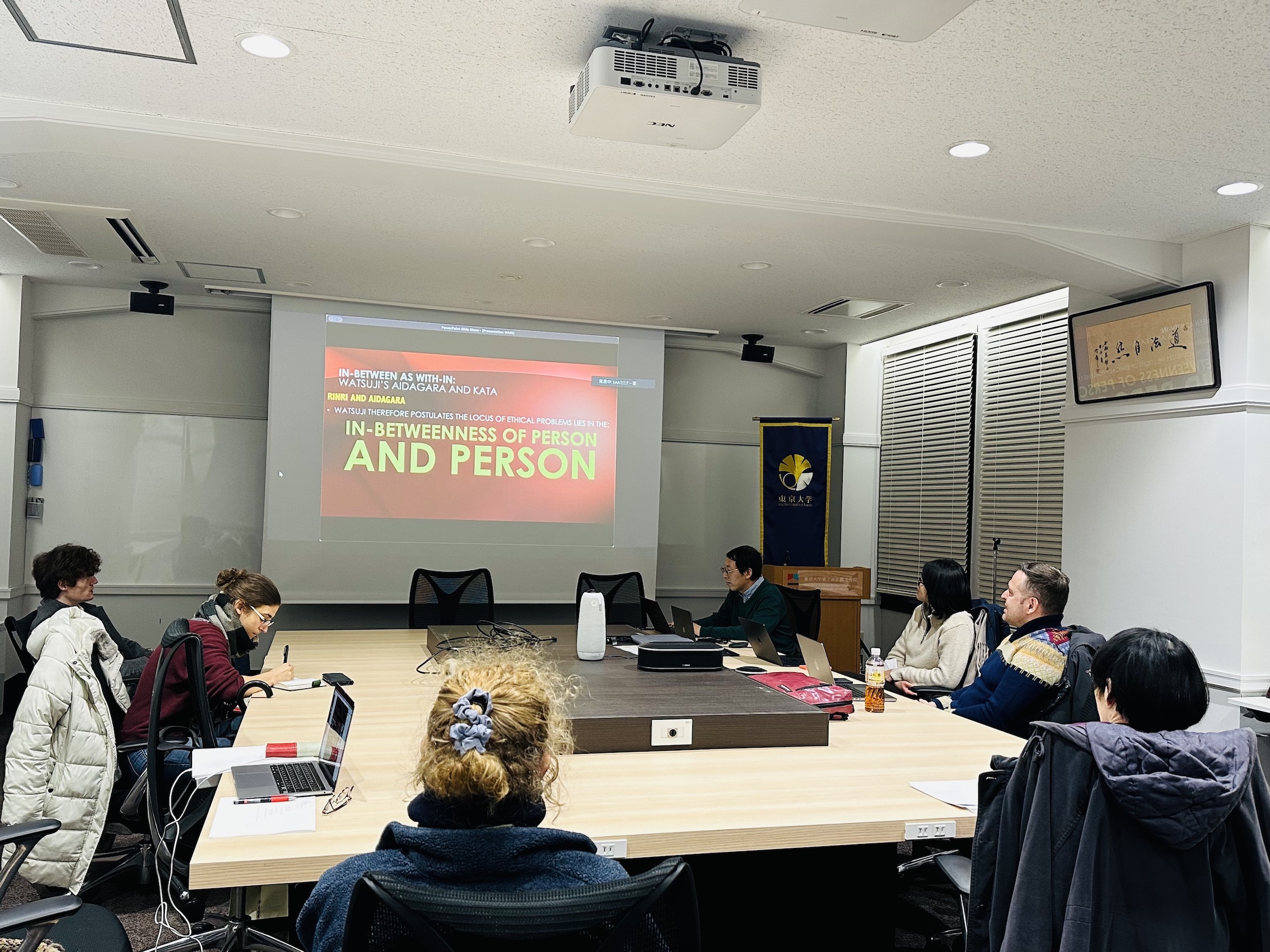
In his talk “In-between as With-in: Watsuji’s Aidagara and Kata”, Dr. Jordanco Sekulovski (Temple University Japan) argues that all Japanese cultures are kata-related. Kata is not just about martial arts, but a technology of the self. For example, how do Japanese people understand each other without talking? It is because there is a non-verbal understanding of kata. From his experience of practicing tea ceremony, Dr. Sekulovski notices that Japanese people do things that emphasize the form and order of an actual process. What is kata? In Japanese, there are expressions such as “Shikata ga nai” or “”Kata ni hamaru.” We cannot understand kata from an individualistic perspective, but from a collectivist perspective. In this sense, Watsuji Tetsuro does not begin his philosophy from an isolated contemplating ego, but the totality of all human existence. Concrete human existence can be seen as an interpersonal relational matrix, an in-betweenness of person and person. This can be related to an ethics based on kata. Here, ethics (rinri) means fellowship (nakama) and rationality or the laws of social existence (ri). In other words, to be an I means to be a correlative we. According to Dr. Sekulovski, Watsuji’s notion of aidagara is not merely about “in-between” (spatial distance or pattern between persons), but a “with-in” or “mid-place”, which can be understood as am all-encompassing or wrapping kata. The talk was followed by a rich discussion on the creativity of individuals, danger of fascism, the possibility of understanding aida as ma, temporal or historical aspect of art or technology, kata as formless form and some possible Chinese equivalences of kata.

Reported by Ching-yuen Cheung (Graduate School of Arts and Sciences)
Photographed by Hanako Takayama (EAA Project Assistant Professor)








